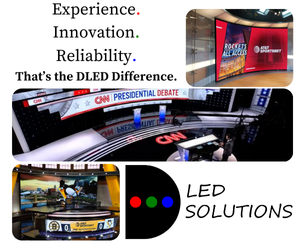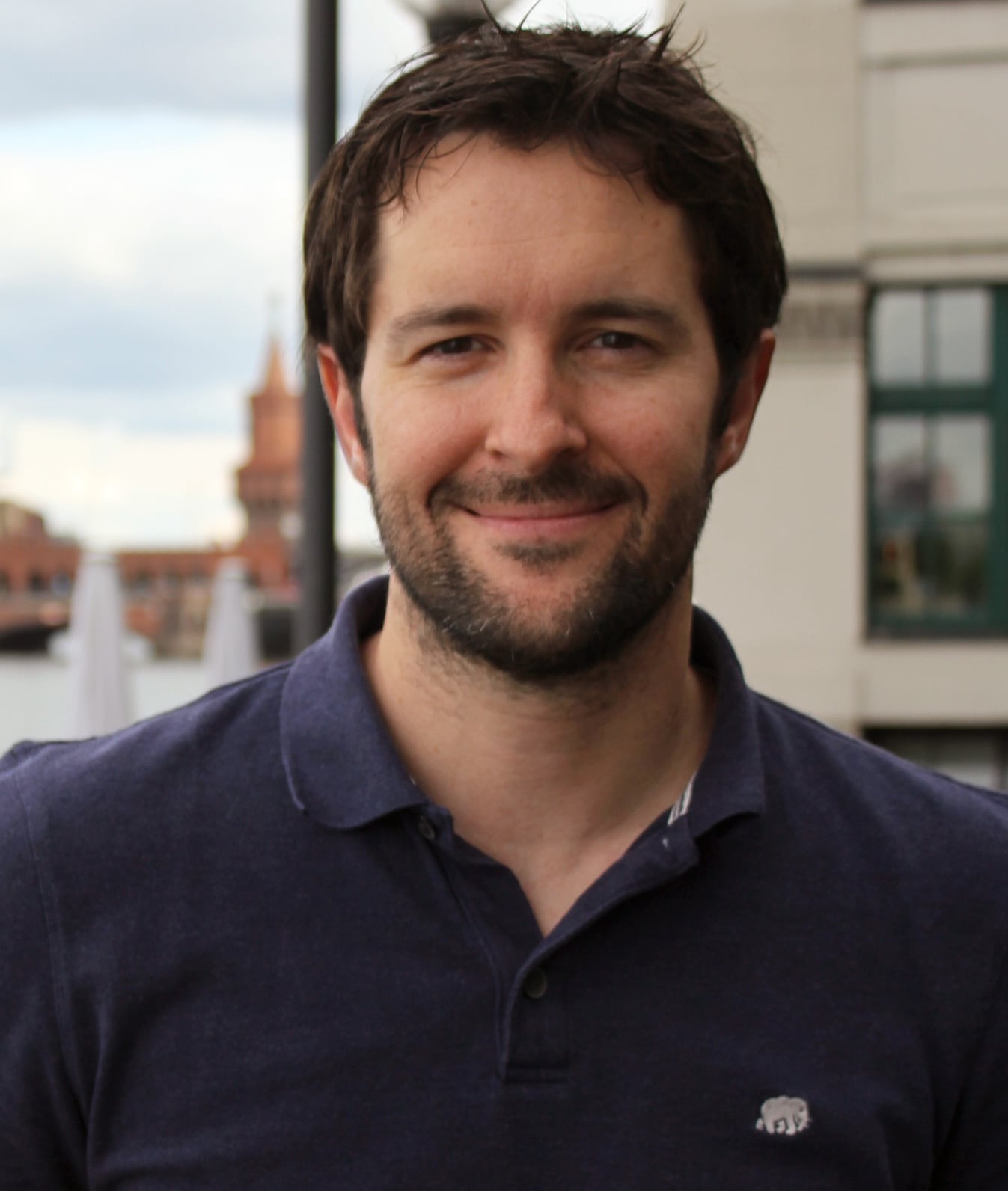NAB Show Perspectives: Taming the Wild West of post-production

Subscribe to NewscastStudio for the latest news, project case studies and product announcements in broadcast technology, creative design and engineering delivered to your inbox.
As we prepare for the much-anticipated NAB Show, the buzz in the air is undeniable. The broadcasting industry continues to evolve at a rapid pace, and hot topics such as AI, cloud storage, and advanced editing tools are on everyone’s lips. But there’s one subject that Projective is particularly excited to discuss at the event: how to make post-production simple.
If you’ve been in the post-production industry long enough, chances are you’ve heard at least one person describe it as “the Wild West.” It’s a fitting analogy — akin to the rugged and lawless times of the frontier, post-production workflows are often chaotic, unstructured, and nobody seems to know exactly what is happening. One editor might be saving files on a shared NAS drive, another might have stock footage sitting on their desktop. Freelancers bring in completed edits from external drives, while cloud storage usage balloons to unsustainable levels. Questions are asked in frustration: “Why is my media offline?” and “Don’t we have that shot in the archive somewhere?”
What you’re left with is a landscape teetering on the brink of disarray, where media is misplaced, files are scattered, and collaboration is hampered by confusion. The result? Missed deadlines, wasted time, and frustrated teams.
But it doesn’t have to be this way. With the introduction of software-based collaboration frameworks and project structure, there are strategies enterprises can adopt to bring efficiency and order without stifling creativity – something that I look forward to discussing with the wider community at this year’s NAB show.
Why is post-production so chaotic?
The evolution of post-production workflows has been an exciting one — empowered by tools like Adobe Premiere Pro, Avid Media Composer, and cloud storage solutions, creators have unparalleled flexibility. However, this same flexibility is a double-edged sword. While these tools allow for dynamic and adaptable editing processes, they also create an environment where organization often takes a back seat.
For example, Adobe Premiere’s ability to work with media spread across multiple locations — local hard drives, external drives, cloud folders, and NAS servers — is both a blessing and a curse. On an individual level, it’s empowering. For a team, it’s a ticking time bomb. Where is the footage? Who moved the files? Why isn’t this asset linked? Media offline errors and frantic Slack messages are all-too-common symptoms of this “Wild West” scene.
Add to this the pressures of modern post-production. Faster turnaround times, leaner budgets, growing demands for remote work, and higher expectations for creative output leave little room for error. If the creative team is just trying to get the job done, standards, structure, and security suffer. “I’ll just upload that to dropbox,” or “I’ll just work on my drive for now,” they often think.
The need for a collaboration framework
If “the Wild West” is the problem, then a collaboration framework can serve as the law and order. A well-crafted framework doesn’t just organize media; it structures the entire lifecycle of a post-production project — from ingest, to creation, to approval, and to archiving.
By implementing a collaboration framework for projects, processes become predictable and controllable. These project guardrails provide the starting point to automate project setup, centralize media, and simplify collaboration. A collaborative framework offers automated project setup, centralizes media, and streamlines collaboration. But most importantly, it frees creative teams to focus on their work, and not all of the tedious media management required to even get started.
Historically, the post-production world has focused on pushing individual files to where they need to be. But for true efficiency, workflows must be designed around the project as a whole. When the project becomes the atomic unit of workflow management, everything else — file organization, collaboration, and archiving — begins to fall into place.
What are the benefits?
1. The Great Round-Up – File organization and accessibility
A collaboration framework centralizes content, preventing media from being scattered across cameras, desktops, and external drives. A structured system automatically directs all project files to a shared workspace. A solution that can find unmanaged assets quickly identifies misplaced files and automatically brings them into the designated project structure, eliminating those dreaded “media offline” errors.
2. The Trail Drive: Collaboration without silos
With a project framework in place, teams and freelancers can collaborate seamlessly from anywhere without the need for separate upload or download processes. Project-based access control ensures everyone has access to exactly what they need — no more, no less — eliminating silos while safeguarding sensitive client content.
3. The Town Clock: Faster turnarounds
Automation is a game-changer in reducing the legwork of setting up workspaces or assigning access. A collaboration framework can automatically set up project structures based on templates, saving media managers hours of redundant work and giving editors more time to focus on creative tasks. Furthermore, this framework can be integrated with upstream resource management tools for automation, or downstream playout or orchestration tools. Thus the value to the organization is dramatically increased.
4. The Bank Vault: Cost control
Cloud storage is a fantastic resource, but when left unchecked, costs can spiral out of control. A collaboration framework provides visibility into storage usage and tools to easily archive or delete projects no longer in use. By streamlining how media is stored and accessed, organizations avoid paying for waste.
5. The New Frontier: No more duplicates
Editors are known for making dozens of copies of a piece of content so that they can work across multiple projects, leading to wasted storage space and, you guessed it, more chaos! With a proactive collaboration framework that seamlessly detects duplicates without interrupting creative workflows, significant savings in both storage and costs can be achieved. Arsenal Football Club successfully recovered 90 TB of storage space — equivalent to nearly ten months of their average usage — by adopting innovative post-production management technology.
6. No Outlaws Allowed: Content security
You can’t protect what you can’t track. By consolidating media into a centralized, secure environment, collaboration frameworks reduce the risk of unauthorized access. This is especially critical when working with external collaborators or freelancers.
The road ahead
In today’s competitive industry landscape, conversations at major trade shows have increasingly focused on the importance of enhancing efficiency and streamlining workflows to maintain an edge. This year’s NAB Show will be no exception.
Yes, the future of post-production will likely be tied to the inevitable AI/ML/GenAI-driven processes, but even the smartest tools won’t solve the chaos of post-production without a foundational framework. If we can encourage organizations to think less about the tech-driven part of “how to do post-production” and more about “how to organize post-production,” the benefits will be staggering.
For teams stuck in chaos and operating with a “Wild West” mentality, it may be time to adopt a collaboration framework. This could be the key to bringing structure and order to your post-production process. After all, with efficiency comes better creativity — and ultimately, better content.
Subscribe to NewscastStudio for the latest news, project case studies and product announcements in broadcast technology, creative design and engineering delivered to your inbox.






tags
Broadcast Workflow, Derek Barrilleaux, NAB Show 2025, NAB Show News, Projective Technology
categories
Content, Featured, NAB Show, Thought Leadership, Voices